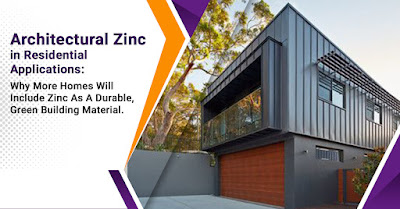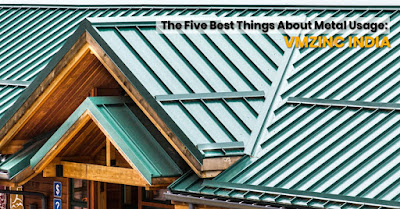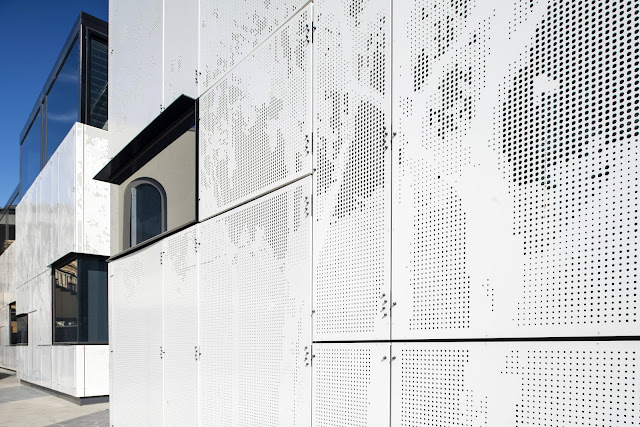Architectural Zinc in Residential Applications: Why More Homes Will Include Zinc As A Durable, Green Building Material
Zinc has increased in popularity in architectural designs due to its durability. It is considered a green building material because it doesn't cause environmental pollution. Zinc architectural designs form a protective coating known as patina or zinc hydroxy-carbonate.
Water and chemicals cannot penetrate once the layer is established. If scratched, the layer will reconstruct over time to its original shape. That is to say; zinc has a healing property all on its own. Because of this, zinc wall cladding and roofs have a long life which can go up to 100 years.
Zinc is also a low-maintenance metal, requiring relatively little energy to manufacture and no upkeep once it reaches its final destination. Zinc roofing and wall cladding panels are never thrown away because of wear and tear, hence the name green building material.
Architectural benefits of zinc
Zinc can be used in various parts of architecture such as roof, wall cladding, façade design, amongst others. The following are the benefits of zinc in architecture.
Durable
zinc doesn't rust; therefore, zinc roofs and wall cladding panels can endure over a century. The protective layer of patina on the zinc "heals" itself after scratching. The layer makes it resistant to corrosion and ultraviolet light, making it low-maintenance. As a result, the initial investment is less than it would have been otherwise.
Attractive façades and roofs
The façade is the front part of the house. Zinc's natural beauty is one of the main reasons for its widespread use. Zinc beauty results from the patina layer that develops after it has been exposed to weather elements. The layer keeps on changing color from silver-gray to dark bluish color. Instead, you may purchase it in an already aged color, allowing you to create even more imaginative designs by combining two or more tones.
Low maintenance cost.
While other materials may need painting after lasting for some time, zinc, on the other hand, can go up to 100 years without any service or maintenance cost. Zinc can recover its surface after any mechanical damage.
Easy workability
Zinc can be shaped by cutting, bending, and folding metal into fascinating designs. This property has made zinc popular among architects. It's elastic, light, and comfortable to hold, all at the same time. A gradual radius may be formed in a 20-foot zinc panel without the requirement for metal tools or machinery to pre-curl the panel.
Eco-friendly
Something is considered eco-friendly if it doesn't cause harm to the environment. Zinc is an eco-friendly material because it does have wastes due to its healing material. In other words, there is no time you will meet zinc waste in the landfill.
Non-toxic
Zinc is a fungal resistant that helps keep mold and moss at bay, and its water runoff is completely safe for plants to consume. The fact that zinc is a micronutrient shows that it is not hazardous to humans or animals. Small amounts of zinc are needed for good health.
Conclusion
Zinc has become popular in most residential homes due to its unlimited benefits. When used in wall cladding, it can last for a long time without losing its beautiful look. It is currently one of the best roofing materials due to its durability. Zinc is also considered a green building material because of its eco-friendly benefits.




Comments
Post a Comment